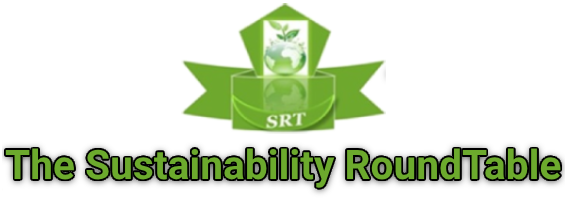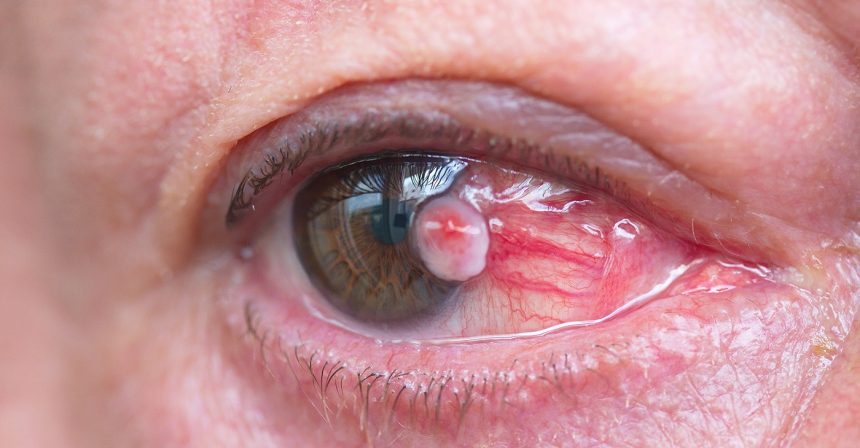As the world commemorates World Eye Day 2024, the focus remains largely on celebrated eye health issues like cataracts, glaucoma, and vision impairment. However, lurking in the shadows is a dangerous, yet rarely recognized eye condition known as pterygium. This invasive eye disease, often dubbed the “silent invader,” has continued to cause significant damage to vision across the globe, particularly in tropical regions. Despite its prevalence and the devastating impact on eye health, pterygium has largely been neglected by both global and national health interventions. This condition, often dismissed as minor and non-threatening, can lead to devastating consequences, including vision impairment and blindness. Urgent attention is required to mitigate its growing threat.
In a detailed press briefing by Adile Iroajugh, the Executive Vice Chairman, Alikwomobu Center for Sustainability and Participatory Development- (ACSPD) to mark the 2024 World Eyes Day, The ACSPD is alarmed at both global and Nigerian statistics of prevalence of Pterygium, and it continued neglect in global eye health programs. ACSPD issue a strong call to action to mitigate negative impact of this neglected eye defect and urge ministries of health, particularly in tropical Africa, to take immediate steps to address the growing crisis.
Despite the rising prevalence, Pterygium has not received the attention it deserves from global health organizations or national health ministries, leaving millions vulnerable to its disabling impact. This investigative report sheds light on the alarming statistics, global neglect, and growing public health threat posed by Pterygium, calling for urgent action from the health authorities.
Pterygium: The Silent Vision Killer
Pterygium, commonly referred to as “surfer’s eye,” is a growth of fleshy tissue on the conjunctiva, the transparent membrane covering the white part of the eye. This growth often extends toward the cornea, the clear front part of the eye, and in severe cases can cover the pupil, obstructing vision and potentially leading to blindness. The growth is thought to be triggered by prolonged exposure to ultraviolet (UV) light, wind, dust, and other environmental factors.
Pterygium primarily affects people in tropical and subtropical climates, where exposure to these elements is more intense. While the early stages of the condition may seem harmless, causing only minor irritation, it can progress into a serious condition if left untreated. The symptoms often include redness, irritation, itching, and a visible growth on the eye. If the condition worsens, it can lead to astigmatism, distorted vision, and even blindness.
Despite its potential to cause severe vision impairment, Pterygium is often overshadowed by more prominent eye diseases, receiving little attention from public health campaigns, governments, or even eye health professionals.
Global Statistics: An Underreported Crisis
Globally, Pterygium is more common than many might assume. According to the World Health Organization (WHO), over 10% of the world’s population in certain regions, particularly those near the equator, suffers from this eye condition. In regions such as Southeast Asia, Latin America, and Africa, Pterygium affects 12-15% of adults (Sun et al., 2019). However, in tropical countries like Nigeria, the numbers are particularly worrisome. The global prevalence of Pterygium is significant, though often underreported due to limited surveillance and public awareness. A systematic review of global data estimates that around 10-20% of the world’s population suffers from Pterygium, with the highest incidence rates in regions close to the equator (Sun et al., 2019).
A more focused study reveals that in tropical regions like Southeast Asia, the prevalence can be as high as 40-50% (Wong et al., 2020). Populations in countries such as Singapore, Malaysia, and Thailand face some of the highest rates of Pterygium due to their geographic location and intense UV exposure. The condition is also widespread in Latin America and Northern Africa, where outdoor occupations expose individuals to risk factors.
Africa, in particular, bears the brunt of this condition. As climate change continues to increase temperatures and exacerbate desertification, the conditions for Pterygium’s spread become more favorable. Pterygium is also closely linked to outdoor labor, which is common in many developing countries where workers spend long hours under the sun without adequate eye protection.
The Nigerian Context: Pterygium as a Growing Threat
In Nigeria, Pterygium is particularly common in northern regions, where the desert climate creates perfect conditions for the disease to thrive. A study published in the Nigerian Journal of Ophthalmology indicated that approximately 20-30% of individuals residing in the Northern regions of Nigeria—where the climate is hotter and drier—are affected by Pterygium (Okoye et al., 2020). Nationwide, it’s estimated that over 4 million Nigerians are living with Pterygium, with 500,000 cases reported annually, especially in rural areas where people are more exposed to direct sunlight and may have limited access to protective eyewear (Abah et al., 2022).
Despite these staggering statistics, Pterygium remains a low priority in Nigeria’s public health system. Public awareness is limited, and healthcare infrastructure in rural areas, where Pterygium is most prevalent, is often inadequate to diagnose and treat the condition in its early stages. Furthermore, the cost of surgery to remove Pterygium is beyond the reach of many Nigerians, particularly those in low-income, rural communities.
Neglect in Global Eye Health Programs: A Dangerous Oversight
Despite being a common condition in many parts of the world, Pterygium receives little attention from global health initiatives. The World Health Organization (WHO) and other international health bodies have focused heavily on conditions such as cataracts, glaucoma, and diabetic retinopathy, while largely ignoring Pterygium. This neglect is dangerous because Pterygium is easily preventable and treatable if caught early, yet it continues to impact millions of people, particularly in low- and middle-income countries.
There are several reasons for this neglect:
- Lack of Awareness and Education: Many people in high-risk regions are unaware of the dangers of Pterygium. The early symptoms—redness, irritation, and minor discomfort—are often dismissed as temporary or unimportant. By the time the condition worsens and impairs vision, it is often too late for simple treatments, requiring surgery instead.
- Limited Funding and Resources: Health ministries and global health organizations have limited resources, which are often allocated to more well-known and immediately life-threatening conditions. Pterygium, which progresses slowly and does not typically cause blindness until the advanced stages, does not receive the same urgency in public health campaigns as conditions like trachoma or river blindness.
- Inadequate Data and Reporting: Eye health data collection systems in many developing countries are weak, meaning that the true prevalence of Pterygium is underreported. This lack of data leads to insufficient resource allocation and a failure to prioritize Pterygium in national health strategies.
Impact on Eye Health in Tropical Africa: A Looming Crisis
Tropical Africa is particularly vulnerable to the increasing threat of Pterygium due to its geographical location and high levels of UV radiation. Climate change is exacerbating the situation, as rising temperatures and advancing desertification increase the environmental risk factors for the condition.
In rural areas of Nigeria, where many people rely on agriculture and outdoor labor, exposure to sunlight, wind, and dust is a daily reality. Farmers and herders in northern Nigeria, for instance, spend long hours in the field without eye protection, exposing themselves to high levels of UV radiation and other environmental hazards. These risk factors contribute to the high prevalence of Pterygium in the region.
Moreover, the economic consequences of Pterygium in Nigeria cannot be overstated. Many people suffering from the condition are unable to work or perform daily tasks, leading to reduced productivity and financial instability. In cases where surgery is required, the costs are often prohibitive, pushing already impoverished families further into poverty.
ACSPD’s Call for Urgent Action
In light of these alarming findings, the Alikwomobu Center for Sustainability and Participatory Development (ACSPD) is issuing an urgent call to action. Ministries of Health, particularly in Nigeria and other tropical African countries, must take immediate steps to address the growing crisis of Pterygium. Several key interventions are needed:
- Nationwide Public Awareness Campaigns: There is an urgent need for education campaigns targeting high-risk populations, particularly in rural and outdoor labor communities. ACSPD is currently leading public awareness campaigns in rural communities to raise awareness about the symptoms of Pterygium and the importance of protecting the eyes from UV exposure. The use of sunglasses with UV protection, wide-brimmed hats, and staying in shaded areas during peak sunlight hours should be promoted.
- Affordable Access to Eye Care Services: Ministries of Health must work to improve access to affordable and timely eye care services, particularly in rural areas where Pterygium is most prevalent. This should include subsidizing the cost of Pterygium surgery and providing financial assistance to low-income individuals who need treatment.
- Strengthening UV Protection Policies: Governments must introduce policies that encourage the use of UV-protective sunglasses and other protective gear among outdoor workers. Ministries of Health can partner with NGOs, private sector actors, and international organizations to distribute free or low-cost sunglasses to high-risk populations.
- Investment in Research and Data Collection: Improved data collection and research into the prevalence of Pterygium is essential for understanding the scope of the problem and designing effective interventions. Ministries of Health should invest in surveillance systems that track eye health conditions, including Pterygium, and ensure that data is collected regularly and accurately.
- Collaboration with Global Health Bodies: Ministries of Health should work closely with international health organizations such as the WHO and the International Agency for the Prevention of Blindness (IAPB) to ensure that Pterygium receives the attention and resources it deserves. These collaborations can help mobilize funding, technical expertise, and global advocacy efforts to address the crisis.
A Wake-Up Call for Global Eye Health
Pterygium is a silent but growing threat to global eye health, particularly in tropical regions like Africa. As climate change intensifies, the environmental risk factors for the condition will only worsen, leading to an increase in cases if urgent action is not taken. The Alikwomobu Center for Sustainability and Participatory Development (ACSPD) is calling on ministries of health in Nigeria and other high-risk countries to take immediate steps to address the crisis. Through public awareness campaigns, affordable eye care services, stronger UV protection policies, and collaboration with global health organizations, we can mitigate the impact of Pterygium and protect the vision of millions of people.
Let us not wait until the next World Eye Day to address this crisis. The time to act is now.


Leave a Reply